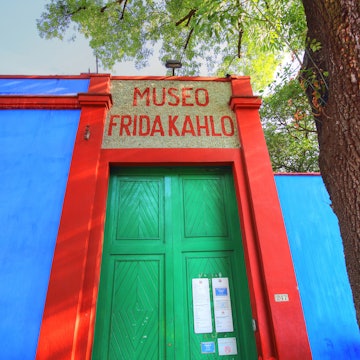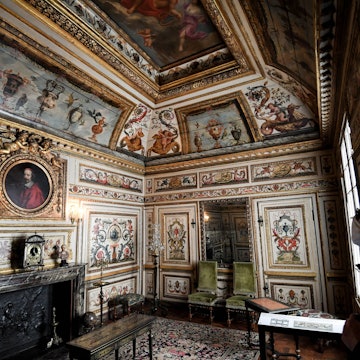

The Louvre in Paris is one of the world’s most visited museums. Here's how to make the most of your visit. Unique Vision/Shutterstock
The Louvre is undeniably Paris’ pièce de résistance, boasting 35,000 works of art on display, including iconic masterpieces, spread across three multi-floor wings. Glancing at each piece for one minute would take 24 days without sleeping, not to mention the time needed to appreciate the museum’s grand surroundings.
Careful planning is, therefore, essential to fully experience the world’s largest art museum, without getting sidetracked in one wing alone. Let us help you get the most out of your visit to the Louvre with our guide to what to see and how.
When should I go to the Louvre?
It’s almost redundant to say “arrive early if you want to beat the crowds,” since that’s true of every major sight in the world. Timed tickets are supposed to prevent overcrowding but – yes – getting there early will mean fewer people and more time to see as many galleries as you want. Prebook your admission as soon as possible to get the best (and ideally earliest) time of day for you.
If you’re more of a evening person, the museum is open until 9pm on Wednesday and Friday; normal opening hours are 9am to 6pm save for Tuesday, when it’s closed.
Top tip: The last entry is one hour before closing, yet rooms start to get cleared 30 mins before closing time, which leaves you very little time to see anything.

How much time should I spend at the Louvre?
How much time have you got?! It’s true that entering the museum for the first time can be intimidating. The key to approaching the vast collections of the Louvre is to consider them from two significant perspectives: Western art, spanning from the Middle Ages to the mid-19th century; and the art of five ancient civilizations that preceded and influenced Western art.
To navigate the museum, just remember that it consists of three wings: the Richelieu (North), Denon (South) and the Sully Wing (East). Possibly the best way to visit it is to allow yourself to choose, explore and be pleasantly surprised. Don’t worry about seeing every masterpiece the Louvre has on display – enjoy the experience itself.
How to make the most of your time
There are different ways to experience the museum, whether you have particular artworks in mind or prefer to discover freely. Here are some itinerary ideas to make the most of your time.

Take a couple of hours to see the highlights
If you’re short on time, you can approach the Louvre by focusing on some iconic pieces, still seeking variety in both artworks and architecture. Start with a face-to-face with the Great Sphinx of Tanis, and explore the Egyptian antiquities in the Sully Wing.
On level 1, view the Seated Scribe statue (room 635), then proceed to the lavishly decorated rooms showcasing the 18th-century royal court lifestyle (rooms 600–622).
Head to the ground level using the central staircase and directly to room 345 to admire Venus de Milo. From there, make your way up again via the magnificent staircase, where the Winged Victory of Samothrace awaits.
Once on level 1 again, continue your journey through the Denon Wing. Take a glance at the golden Galerie d’Apollon (room 705) before immersing yourself in the painting galleries. Start with the Salon Carré (room 708), which leads to the impressive Great Gallery, featuring masterpieces by renowned Italian artists, including Leonardo da Vinci’s Mona Lisa (room 711).
If you have extra time, visit the Cour Marly and Cour Puget in the Richelieu Wing to bask in the light and marvel at their imposing sculptures, including the Marly horses.
See more of the Louvre in half a day
With additional time, you can further explore the remarkable surroundings of the former palace and appreciate the architectural additions made by successive residents over the centuries.
In the magnificent Renaissance sections of the southern wings (Sully and Denon), attributed to Henri II and Henri IV, you can explore Greek and Roman antiquities displayed across the Ballroom and the Salle du Manège. These rooms showcase the imported style from Italy, with notable features like the gate supported by caryatids, originally designed for hosting musicians. It’s fascinating to imagine that Molière himself performed in front of King Louis XIV in this very space a century later.
Ascend the grand Mollien staircase to level 1, where you’ll find the red-walled galleries housing masterpieces by French artists, including Delacroix’ Liberty Leading the People (room 700).
For a refreshing break, head to the Mollien Café, which offers a splendid view of the Carrousel du Louvre from its terrace.
To end your visit, head to Cour Khorsabad (room 229 in the Richelieu Wing) where the monumental vestiges of the Assyrian city and palace of King Sargon II at Dur-Sharrukin (now Khorsabad) are presented.

Get a sense of the site’s history with a full day at the Louvre
If you’re up for a more extensive exploration, you can delve deeper into the historical layers of the Louvre.
Entering from the Carousel, you may have already seen some of the complex’ medieval remains, dating back from 1190 when King Philippe-Auguste decided to build a fortress. Descend beneath the Cour Carrée to admire the surviving elements of the original moats and drawbridge, and realize the complexity of the former palace’s architecture.
Make a jump in time, exploring the well-preserved apartments of Napoléon III in the Richelieu Wing (rooms 535–49) for a taste of lavish Second Empire style.
If you need a refueling stop, visit Café Richelieu / Angelina for a meal, or sample the famous hot chocolate.
Art enthusiasts shouldn't miss the top floor of the Sully Wing, showcasing two centuries of European and French masterpieces. But if you’re more into decorative arts, you will prefer to spend time wandering the Richelieu Wing galleries on level 1.
Alternatively, discover a small collection of artworks from Asia, Africa, Oceania and the Americas in a more intimate section (rooms 424–33). If you want to see more, consider a visit to other Paris museums where these regions are more fully represented, such as the Musée du Quai Branly and the Musée Guimet.
Where should I eat or drink near the Louvre?
With an abundance of options for eating and drinking at the Louvre, you won’t go hungry. You can grab a light meal from takeaway counters under the Pyramid on the Denon Mezzanine, or book a proper sit-down meal at Café Marly on rue de Rivoli, opposite the Pyramid.
There are also a host of takeaway options outside, like the Eric Kayser bakery truck at the Jardin du Carrousel entrance (by the Arche du Carrousel).
Is the Louvre accessible?
Yes. Visitors with disabilities as well as their carers are admitted for free and given priority entry if there’s a queue. It’s best to get in touch before your visit as you still need to book ahead to guarantee entry during peak periods.
The Louvre is not only accessible for people with mobility issues, it also makes people with invisible challenges feel welcome, with foldable chairs available to borrow for free, plus sensory bags to borrow with noise-cancelling headphones and other useful items.
Pick up a pamphlet from Visitor Information, which will help you locate quieter rooms, benches, lift and restrooms for a more relaxed experience.

How do I get to the Louvre?
Walking and cycling are excellent ways to get around in Paris. If coming by Metro, get off at Palais-Royal / Musée du Louvre (lines 1 and 7) or Pyramides (line 14). Arriving by boat? You‘ll alight at Quai François-Mitterrand. There are also myriad bus routes that will drop you nearby.
Top tips for your Louvre visit
Make sure to book your ticket online in advance, as you won’t need to line up at the museum desk – or worse, miss out entirely.
The Louvre website is a valuable resource for finding inspiration and planning your visit, with thematic itinerary ideas.
Arriving early will give you the opportunity to explore more galleries.
Wear comfortable shoes – you may end up walking through 403 halls and nearly 15km (10 miles) of corridors.
If you're visiting with children, take a break at The Studio (level 1 in the Richelieu Wing), which provides creative materials for little ones to enjoy.
This article was adapted from Lonely Planet’s Experience Paris guidebook, published in June 2024.
















